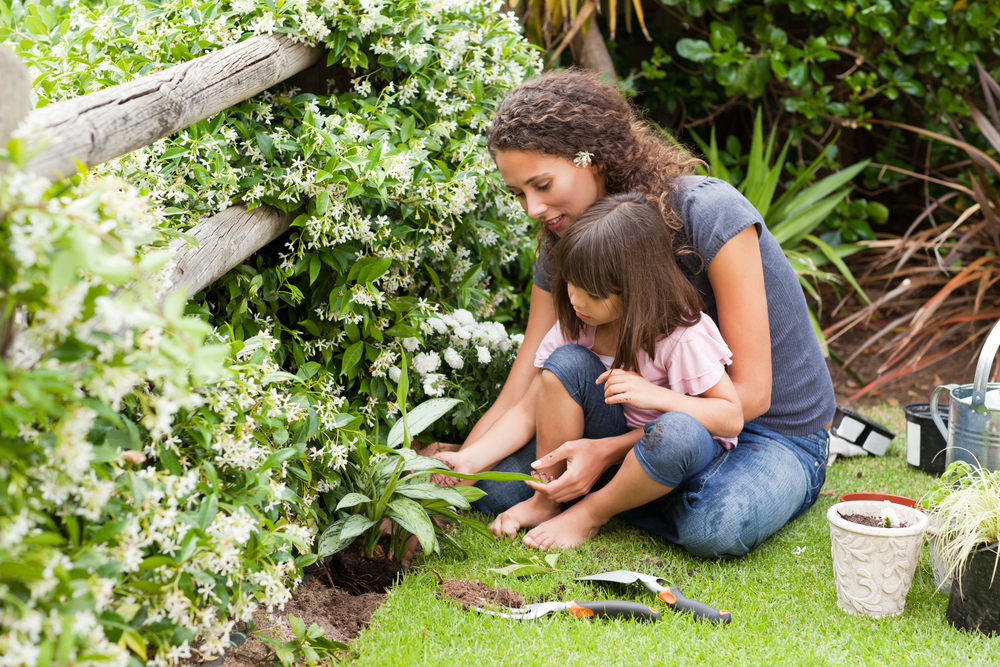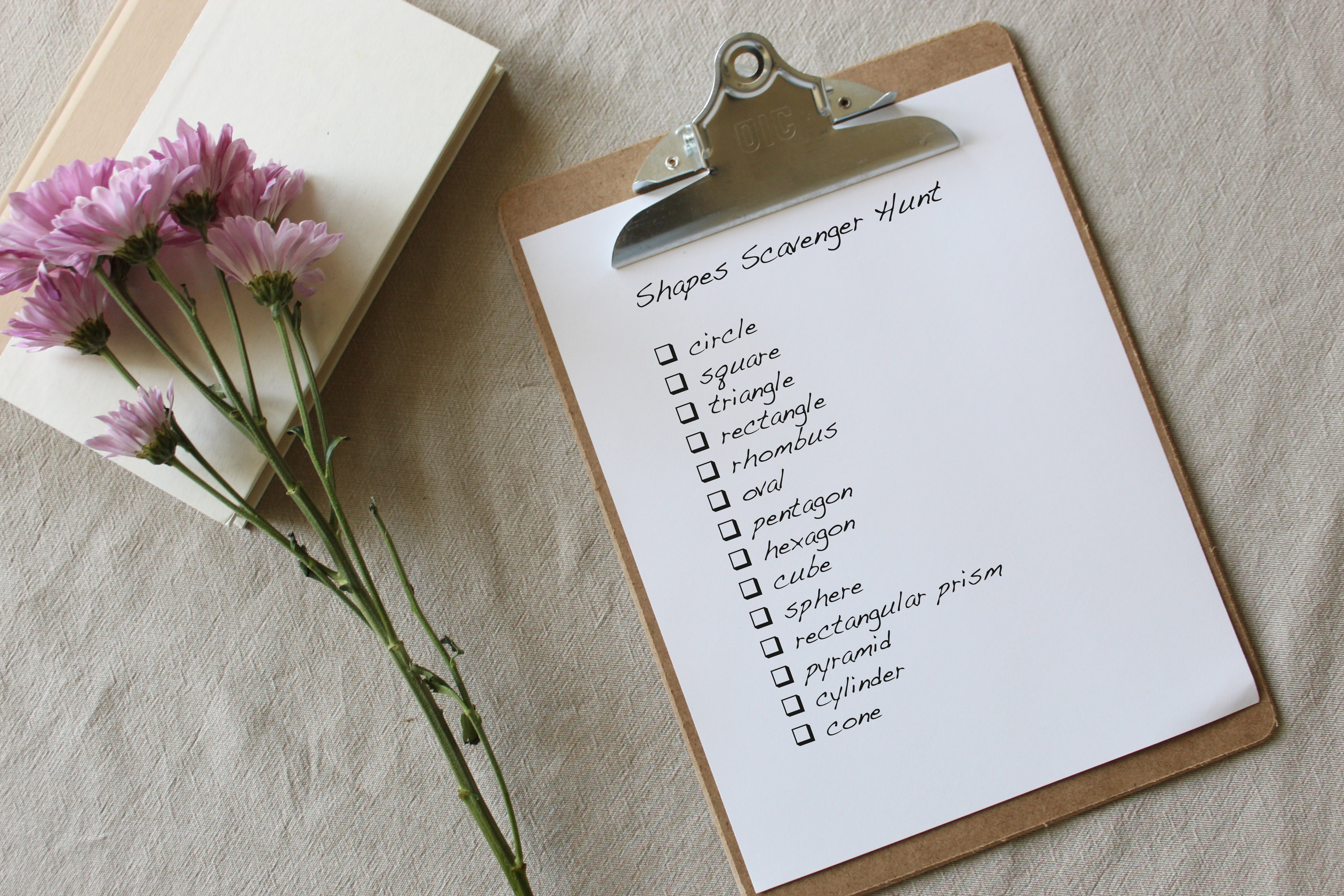
8 Physical Activities for Kids of All Ages
Studies show that kids who get regular physical activity experience improvements in fitness and brain function. Physically active children aren’t just healthier, but they also learn better. This is why we encourage teachers and parents to include movement opportunities throughout the day to help children reach a recommended 60 minutes of daily physical activity. We compiled some easy, fun, self-guided activities, perfect for yards and indoor spaces of all sizes and kids of all ages. Be sure to check out our recent blog post with how to make your socially distanced summer hikes exciting.
#1 FAMILY GRATITUDE WALKABOUT
Supplies needed: Comfortable walking shoes and a mask to practice safe social distancing
Step 1: Along with your family, go outdoors (while practicing safe social distancing) and take a walk together in your neighborhood.
Step 2: Spark a family conversation about how being active benefits both the body and the mind.
Step 3: Engage everyone to share a silver lining of the COVID-19 pandemic, something or someone they are grateful for or appreciate right now.
Research shows that expressing gratitude reduces stress, increases optimism, and changes your brain. Dedicate your gratitude walk to someone or something you are grateful for.
#2 OBSTACLE COURSE
Supplies needed: painter’s or masking tape
Setup Time: 3 minutesPhysical • Activity Time: 15 minutes
Step 1: Adhere masking tape or painter’s tape to the floor to create a dotted tape line. Add straight lines and twists for more fun!
Step 2: Add obstacles along the path.
- Chair to crawl over
- Table to crawl under
- Bed to crawl over
- Pile of pillows to jump or crawl over
- Stuffed animal or book to walk around
- Socks to jump beside or onto
Step 3: Add movement breaks along the path.
- Do 10 jumping jacks, lunges, windmills, burpees, push-ups, toe touches, high knees, rainbow stretches, leg kickbacks, bicep curls, etc.
- Count to 10, 20, 30, 40, or 50 as you run in place.
- Sing and do the motions for “Head, Shoulders, Knees, and Toes.”
- Sing and dance to a favorite song.
- Hold a plank for 5, 10, 20, or 30 seconds.
- March in place and count by 1s, 5s, 10s, or 100s.
- Stretch up and touch your toes under each doorframe.
Optional: In addition to obstacles and movement breaks, add tasks such as:
- Open and close doors or drawers.
- Turn lights off and on.
- March up and down stairs.
- Read an analog or a digital clock and shout out the time.
- Read words written on the tape path.
- Solve simple math problems written on the tape path.
Outdoor Variation: Use sidewalk chalk to draw your obstacle course path on a sidewalk or driveway or in a parking lot.
#3 YOGA CHALLENGE
Supplies needed: Yoga mat, blanket, or towel (for each person) and an empty space
Set up time: 1 minute • Physical activity time: 20 minutes
Yoga and practicing mindfulness have many benefits for both children and adults ranging from improved self-esteem, body awareness, and focus to an enhanced sense of calmness and relaxation.
Instructions for Play: If desired, place a yoga mat, blanket, or towel on the floor for each person. Start by demonstrating a few simple yoga poses to familiarize kids with the different postures. To get started, visit Yoga Journal to learn a few basics (https://www.yogajournal.com/poses/yoga-for/kids). Basic yoga poses include cat, cow, cobra, and downward facing dog.
Step 1: Call out and demonstrate each pose. As children hold each pose, encourage them to breathe deeply in through the nose and out through the mouth as they count aloud. For a challenge, repeat each pose, hold it for longer, and count to a higher number.
Step 2: After practicing the basics, encourage kids to get creative and come up with (and name) their own poses. Children may also want to do a creative yoga pose challenge. Challenges might include:
- A pose balanced on one foot
- A pose with one or both hands on the ground
- A pose based on an animal
After each challenge, have fun trying to sequence the poses together!
#4 SACK RACE
Supplies needed: Masking or painter’s tape for creating the start and finish lines, burlap sack or pillowcase.
(Optional: Obstacles such as plastic cones, cardboard boxes, stuffed animals, etc.)
Set up time: 3 minutes • Physical activity time: 15 minutes
Step 1: Using tape or cardboard, create the start and finish lines for your course. For added fun, add obstacles such as plastic cones or stuffed animals for your racer(s) to go around.
Step 2: Participants should run to the sack or pillowcase, put both feet in and begin jumping toward the finish line.
Play following these rules or make up your own:
- Racers must keep both feet in the sack and at least one hand on the sack at all times.
- Racers must avoid the obstacles by jumping around or over the item.
- The first racer to reach the finish line and return to the starting line by either jumping backwards or jumping forward will win.
Alternative: The three-legged race. Two participants tie their touching leg together and race in the same way as described above.
#5 TIC-TAC-TOE
Supplies needed: Masking or painter’s tape for creating an indoor grid, sidewalk chalk for creating an outdoor grid, and sheets of paper or paper plates and a dark marker or sets of miscellaneous objects to represent Xs and Os
Set up time: 5 minutes • Physical activity time: 15 minutes
Step 1: Using tape or sidewalk chalk, create a large three by three tic-tac-toe grid.
Step 2: To create Xs and Os, you can simply draw them on sheets of paper or paper plates. You can also use household objects for Xs and Os such as forks and spoons, crayons and pencils, etc.
Step 3: To play, follow these rules.
- Decide who will go first.
- Player 1 should choose a square and put the X, O, or object in it.
- Player 2 should choose a square and put the X, O, or object in it.
- Players take turns until one player gets three in a row (up, down, across, or diagonally). The first player to get three in a row is the winner.
- If all squares are filled without a winner, the game is over.
Variations:
- Label the grid with math problems, spelling words, even numbers and odd numbers, two-dimensional and three-dimensional shapes, uppercase and lowercase letters, vowels and consonants, analog or digital clocks, etc. Before choosing a square, each player should name the item shown on the space before, read the word or clock, solve the math problem, etc.
- Before choosing a square, each player should do the action of your symbol. For X, cross your arms into an X and or jump and cross your legs into an X. For O, make a circle with your arms in front of you or above your head.
#6 JUMPING FUN
Supplies needed: Masking or painter’s tape, open space to set up the tape lines
Set up time: 5 minutes • Physical activity time: 15 minutes
Step 1: Make 10 separate lines of tape. Space them about a foot apart. Label the first line with “start.” If desired, label each tape line with consecutive numbers or letters such as 1, 2, 3; A, B, C; 10, 20, 30, etc.
Step 2: Play using these simple instructions for various ways to jump. If desired, ask children try to beat their best jumps with repeated tries. Children may also want to experiment with arm movements to find out whether the movements help them jump farther.
- Long Jump: From a standing position, find out how many lines children can jump over in one big jump.
- Backward Long Jump: Try a backward long jump! Can children beat their front-facing jump score?
- Long Hop: From a standing position, find out how many lines children hop over on one foot.
- Extended Stretch: Find out how far children can stretch with one foot on the Start line.
- Running Long Jump: Tell children to run, land one foot on the Start line, and find out how far they can jump.
- Triple Jump: Tell children to run, land one foot on the Start line, and find out how far they can jump three times in a row.
- High Jump: For a variation, tie a string between two objects and tell children to jump over it from a standing position. If desired, raise the string for higher jumps.
#7 SCAVENGER HUNT
Supplies needed: Paper and crayon/pencil for creating a scavenger hunt list
Set up time: 5 minutes • Physical activity time: 15 minutes
Step 1: Follow the COVID-19 guidelines established by your city and/or state and choose an outdoor location for the scavenger hunt. The location might be in your yard, in your neighborhood, or in a local park. Remember to practice safe social distancing!
Step 2: Read the first item on the list and the associated action. Hunters should find the item and do the action, then move on to the next item. Each time hunters find an item, they should say, “I found it!” and put their hands up to their eyes like binoculars. Then, they should do the movement. If desired, children can work together in pairs.
Step 3: Repeat step 2 for each item the group should find. Watch the fun unfold!
Here are some ideas to get you started.
- Clouds: Count the clouds you see in the sky. Hop or spin one time for each cloud you count.
- Animals: Point to a cloud that looks like an animal or point to a real animal. Then, move like that animal.
- Insects: Look down low to find an insect. Then, move like that insect.
- Birds: Look for birds up in trees, on power lines, and in the sky. Flap your wings as you count the birds.
- Colors: Find each color of the rainbow (red, orange, yellow, green, blue, indigo/purple). Then, do rainbow stretches from side to side.
- Numbers: Find a number under 10 or 10 of the same thing. Touch your toes as you count to the number.
- Flowers: Find and point to a flower. Then, pose like the flower by standing tall, bending sideways, extending in all directions, etc.
- Plant or Tree: Find or point to a plant or tree. Pretend you are a seed, then pretend to grow into the plant or tree.
- Something Up High: Find something up high like a light post, building roof, or a treetop. Jump up and stretch toward it.
- Something Down Low: Find something down low like a sidewalk, a pinecone, or a stick. Squat down and pretend to touch it.
- Something Light: Find something light like a leaf or a blade of grass. Bend down to pick it up. Then, toss it gently into the air.
- Something Heavy: Find something heavy like a large tree or bush. Pretend to pick it up.
#8 HOPSCOTCH
Supplies needed: Masking or painter’s tape for indoors, sidewalk chalk for outdoors, and a small toss-able item (bean bag, rock, small soft toy)
Set up time: 5 minutes • Physical activity time: 20 minutes
Step 1: Create a hopscotch path by adhering masking tape or painter’s tape to the floor to create the squares.
- Traditional hopscotch boards include a straight path with single and double (side-by-side) squares. The squares are numbered 1 through 10.
- Variations may include a spiral pattern, an open rectangle pattern, single and triple squares, large squares divided into four triangles, a curving path, letters instead of numbers, etc.
Step 2: Play following these rules or create your own version of the game.
- Decide who will go first.
- Player 1 should throw the marker into square 1. If the marker lands on a line or outside the square, the player loses the turn.
- Hop on one foot into the first empty square, and then every other empty square. Skip the square your marker is on.
- At the side-by-side squares, jump with both feet.
- At square 10, jump with both feet, turn around, and continue the path back toward the start.
- When the player reaches the marked square again, the player should pick up the marker and complete the path.
- When a player completes the path, the player should pass the marker to the next player. On each player’s next turn, they should throw the marker to the next number.
- If a player falls, jumps or hops outside the lines, or misses a square or the marker, the player loses a turn and must repeat the same number on the next turn.
- The first player to complete the path with the marker on square 10 is the winner.
Variations:
- Each player has a limited amount of time to complete the course.
- Players kick the marker from square to square instead of hopping and jumping.
- Players add or multiply the two numbers they jump or hop on.





